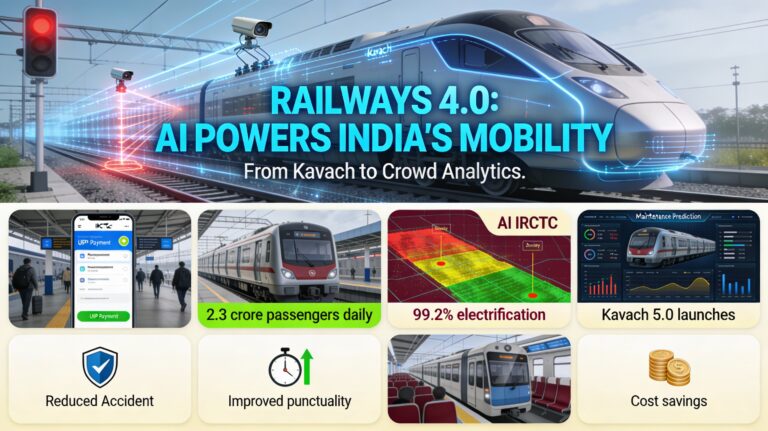Imagine a chip that doesn’t overheat, doesn’t drain power, and instead of wasting energy—recycles it. Welcome to the dawn of reversible computing, a radical approach poised to revolutionize everything from smartphones and laptops to AI servers and data centers.
While traditional chip designs burn energy every time a logic operation flips a bit from 1 to 0, reversible computing embraces thermodynamic reversibility, enabling logical operations that conserve energy. Recent breakthroughs now show that up to 50% of energy in logical circuits can be recovered during operations—an innovation that may define the next era of sustainable tech.
What Is Reversible Computing?
Reversible computing is a computational paradigm where each output state can be uniquely mapped back to its input. In simpler terms, no information is lost during computation.
Conventional computing is irreversible—you perform a logical operation (like AND or OR), and some bits are discarded as waste. According to Landauer’s Principle (1961), erasing information inevitably dissipates heat. This is why chips heat up.
Reversible computing aims to sidestep this problem using:
- Adiabatic switching (ultra-slow transitions that reduce energy loss)
- Resonant circuits (which recover energy instead of dissipating it)
- CMOS-based designs tweaked for low-energy, low-leakage performance
This can reduce the energy cost per operation by orders of magnitude, especially vital for AI workloads and large-scale data centers.
Why Does It Matter Now?
As AI models like GPT-4 and beyond grow in size and compute demands, data centers are devouring terawatt-hours of electricity, pushing power grids and carbon budgets to the limit. Traditional chips—even efficient ones like GPUs and TPUs—waste energy as heat.
Problems With Current Chips:
- ~90% of input energy is lost as heat.
- Cooling systems in data centers consume nearly as much energy as the computation itself.
- Energy inefficiency leads to limited battery life in mobile devices and high costs in cloud infrastructure.
Reversible Computing Offers:
- Energy recycling: Reduces net energy use by up to 50% (with future potential for 90–99%).
- Cooler chips: Reduces or eliminates the need for large cooling systems.
- Lower operating costs: Ideal for hyperscalers like AWS, Google, Microsoft.
How Does It Work?
1. Adiabatic Switching
This method charges and discharges circuits very slowly through controlled voltage ramps, ensuring that energy isn’t lost in resistive heating. It trades speed for efficiency, making it ideal for batch tasks and AI inference rather than real-time gaming.
2. Resonant Clocking
Electricity flows through inductors and capacitors in a resonating loop. Instead of getting dissipated as heat, the energy bounces back and forth, minimizing energy loss.
3. Reversible Logic Gates
Special logic gates like Toffoli or Fredkin are designed so that no bit of information is thrown away. This is key to avoiding the thermodynamic cost of erasing data.
4. Prototype Chips
CMOS-based experimental chips using these principles have already demonstrated 40–50% energy recovery during basic logic operations. This is just the beginning.
Potential Applications
AI & Machine Learning
- Training large models demands millions of operations per second. Reversible logic could halve power usage, enabling greener AI.
- Could improve AI at the edge (e.g., in mobile devices, IoT), where power is limited.
Data Centers

- Data centers contribute to nearly 1% of global electricity use.
- Reversible chips can drastically reduce cooling demands, making hyperscale infrastructure more sustainable.
Quantum Computing Bridge
- Reversible logic is a classical cousin to quantum computing, where reversibility is a fundamental principle. Learning from one benefits the other.
Edge Devices and IoT
- With no fans or heatsinks needed, these chips are ideal for low-power, low-maintenance devices in rural and remote areas.
Challenges Ahead
Despite the promise, reversible computing isn’t ready for full-scale commercial deployment yet. Challenges include:
- Speed vs. Efficiency Trade-off: Adiabatic switching is slower, unsuitable for real-time tasks.
- Manufacturing Complexity: New designs require rethinking chip architecture and fabrication.
- Toolchain Limitations: EDA tools (used to design chips) are not optimized for reversible logic.
- Industry Inertia: Companies are deeply invested in optimizing irreversible designs.
However, researchers believe that within a decade, hybrid chips combining reversible and traditional logic could bridge the gap.
Global Research & Industry Trends
Several labs and companies are exploring reversible computing:
- MIT & Stanford: Leading fundamental research on adiabatic circuits.
- Intel & IBM: Investigating hybrid chip architectures combining classical and reversible logic.
- NASA & DoE: Considering reversible systems for low-power space applications.
- Startups like ZeroASIC and Ayar Labs: Working on energy-aware chip designs compatible with AI workloads.
India’s Opportunity
India’s Semicon Mission and push for AI compute infrastructure can benefit greatly from adopting reversible computing early:
- Build sustainable, green AI compute centers.
- Enable climate-conscious chip manufacturing.
- Train engineers in next-gen chip design for long-term tech sovereignty.
Conclusion
Reversible computing isn’t just another incremental improvement—it’s a paradigm shift. In an era where digital systems are swallowing more energy than ever, this innovation flips the script: computing doesn’t have to be power-hungry.
If scaled and adopted correctly, reversible chips could make AI, data centers, and digital infrastructure truly sustainable—ushering in a world where our machines not only think smartly but also consume wisely.
The future of computing may not be faster—it may be cooler, quieter, and far more efficient.









+ There are no comments
Add yours